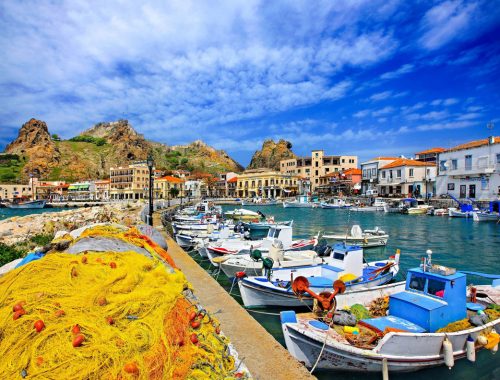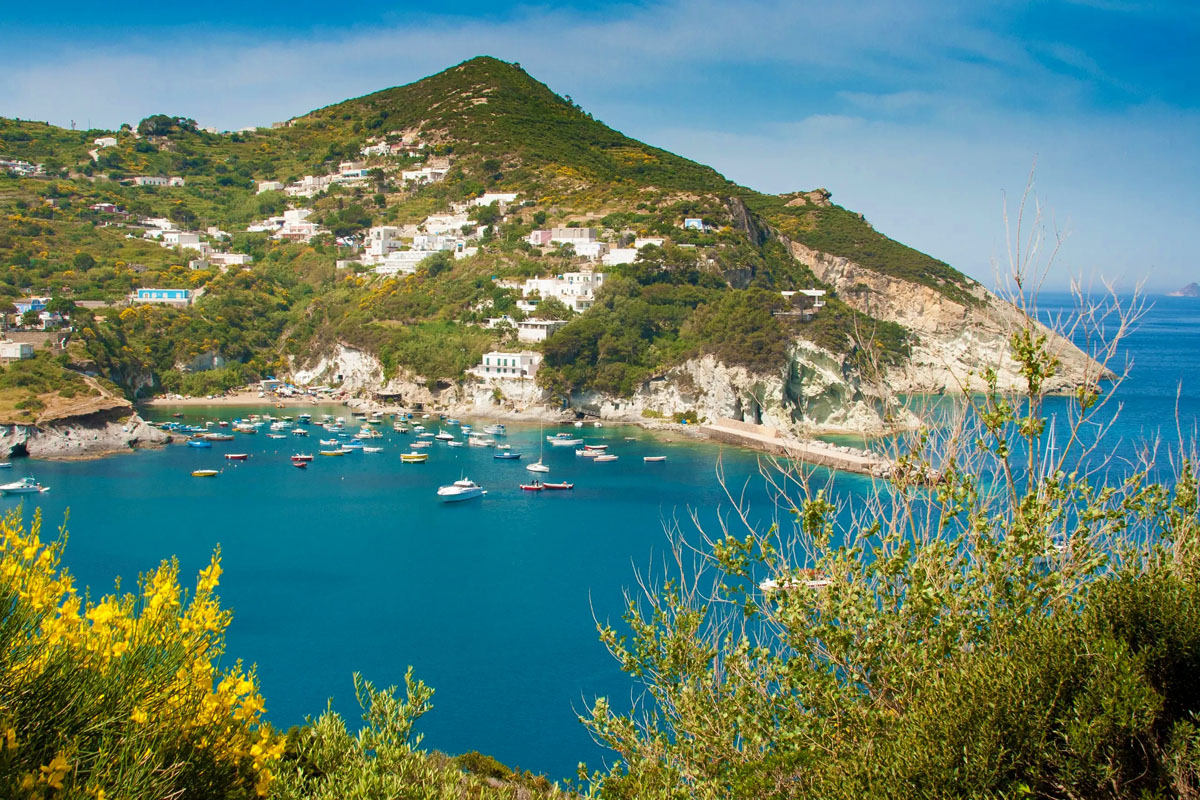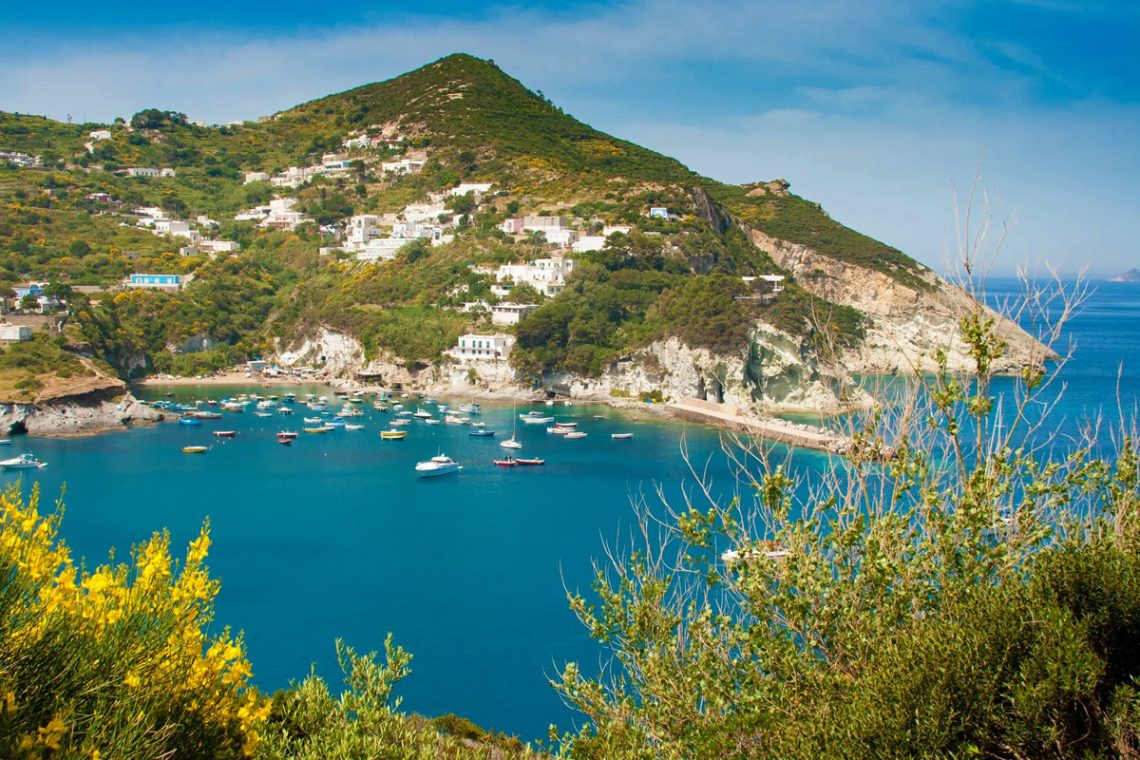
Ponza: Sailing among dreamy coves, sea caves, and archaeological treasures
Sailing around the island of Ponza reveals hidden coves and sea caves with crystal-clear waters, breathtaking views, and fascinating archaeological treasures — all enriched by a lively nightlife. Wild, romantic, and at the same time cosmopolitan, this crescent-shaped hilly island lies in the Gulf of Gaeta, facing San Felice Circeo. It is a true treasure chest of natural beauty waiting to be explored: beaches, sea stacks, secluded coves accessible only by boat, and striking white cliffs steeped in myth and history. This is the legendary home of the sorceress Circe, but also an island once visited by Phoenicians, Greeks, and Romans — traces of whose past, such as imperial villas, necropolises, and Roman cisterns carved into tuff rock, can still be admired today.
Among the must-see attractions are the stunning viewpoints reached by hiking trails through unspoiled nature, such as Monte Guardia and Punta Incenso. At sunset, Ponza reveals its lively spirit, with aperitifs just a few steps from the water, restaurants serving traditional dishes, and bars where you can enjoy the island’s vibrant nightlife until the early hours.
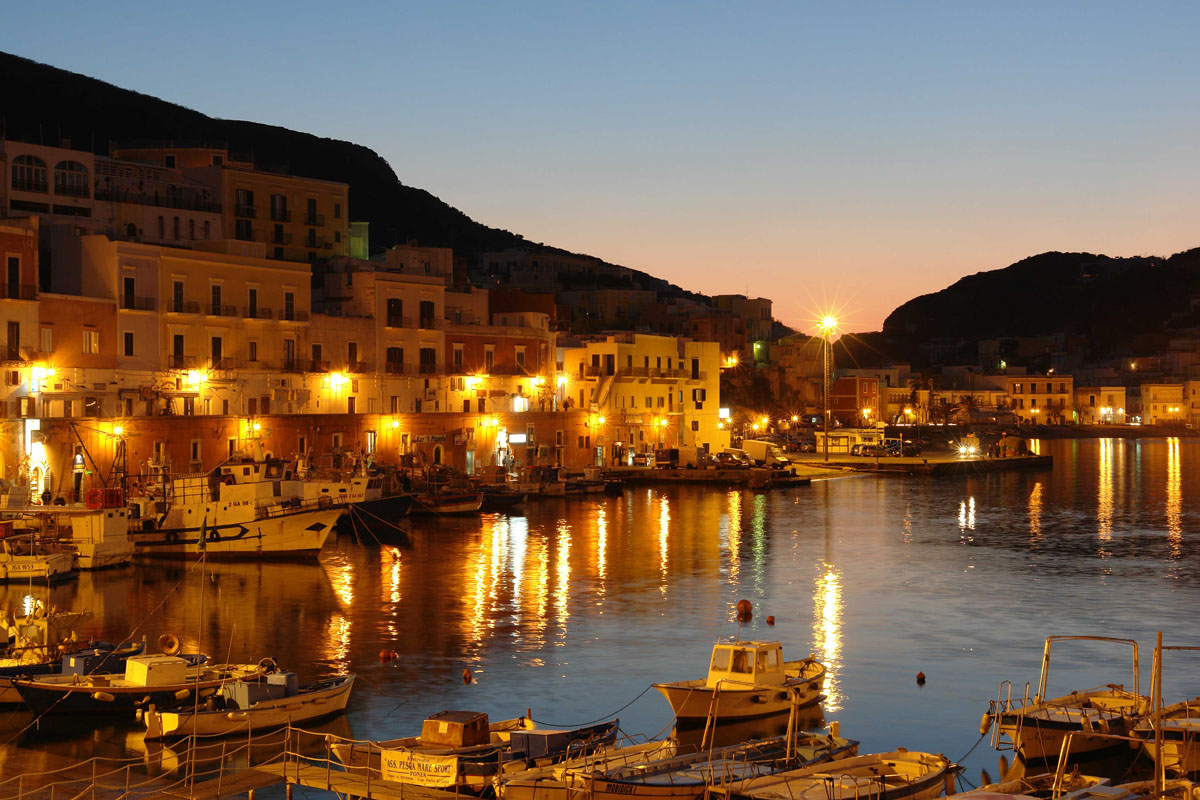
The wonder of the Bourbon Harbor
Wooden boats and fishing skiffs gently bobbing on the water, with colorful houses as a backdrop — this is one of Ponza’s most iconic postcard views, welcoming you upon arrival. In Roman times, it was already an important trading port, but its current appearance is owed to King Ferdinand IV of Bourbon, who commissioned its renewal and modernization. Today, it’s the beating heart of Ponza’s daytime and nighttime life, lined with shops, bars, and restaurants. From here, you can embark on boat excursions around the island or to the nearby islands of Palmarola and Zannone.
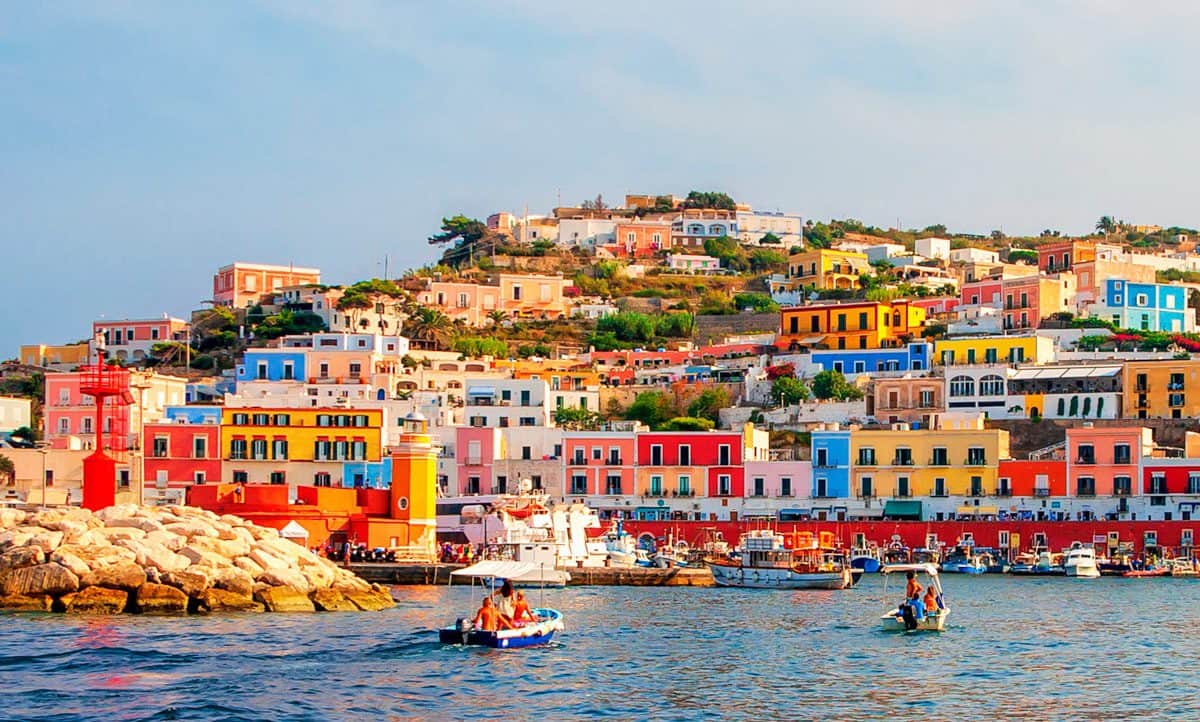
The historic center — the lively heart of the island
A charming maze of narrow alleys, stairways, and winding lanes filled with unexpected views and pastel-colored houses. As you stroll through Ponza’s old town, stop by the Church of San Silverio and Santa Domitilla, easily recognizable by its impressive dome. Inside, you’ll find valuable frescoes, mosaics, paintings, and a statue of San Silverio, the island’s patron saint, whose feast is celebrated every year on June 20th. Overlooking the harbor, Corso Pisacane is the main street and social hub of Ponza, perfect for shopping, breakfast, or an aperitif at historic spots like Bar Tripoli, followed by dinner at one of the many restaurants serving local delicacies.
Among the must-see attractions is the Roman Cistern of Dragonara, a masterpiece of hydraulic engineering once used to collect and store water during dry periods. Hidden and abandoned for centuries, it can now be explored through guided tours organized by the Ponza Pro Loco Tourist Office (booking required). Also worth visiting are the Case Grotta, the island’s traditional cave dwellings carved into the rock and inhabited since prehistoric times. Over the centuries, they’ve been adapted and expanded with masonry rooms. Finally, don’t miss the Botanical Garden, located atop the hill of the Bourbon Belvedere, offering breathtaking views of the harbor and nearby islands. Bursting with color and fragrance, it preserves more than 70 plant species native to the Pontine Archipelago, including wild orchids and a small aquatic garden.
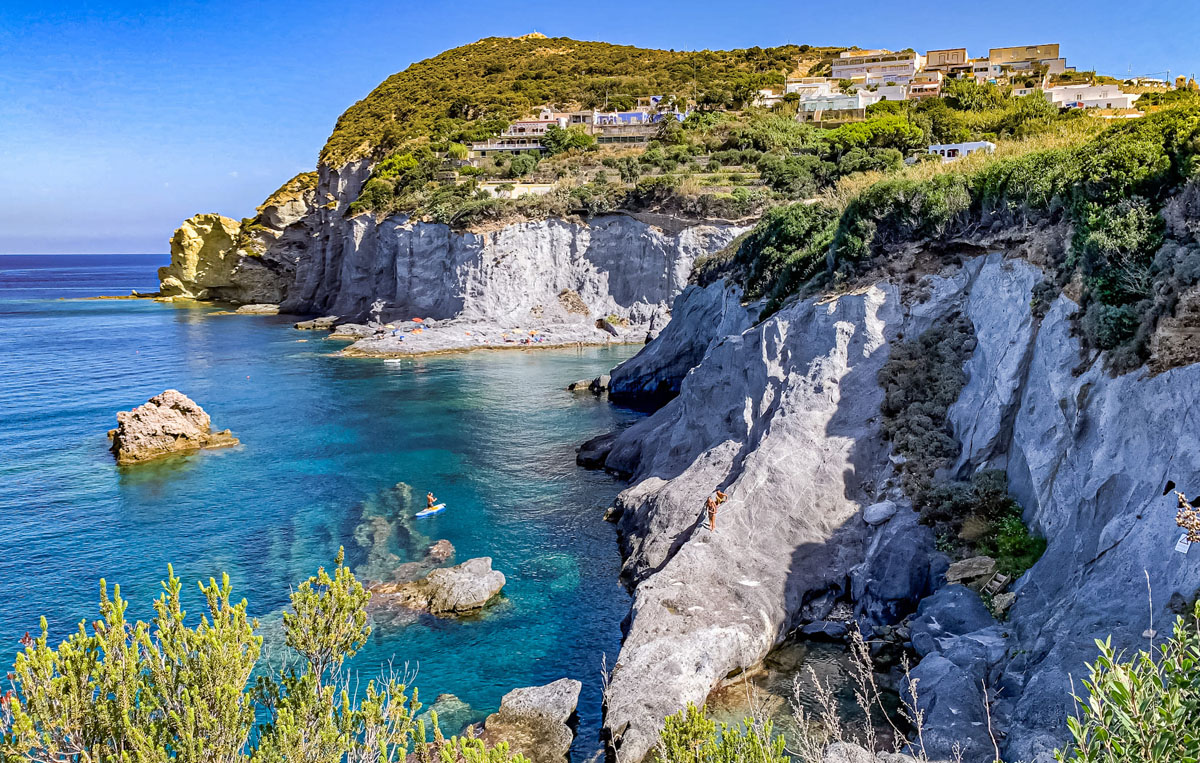
The most beautiful coves for anchorage
Most of Ponza’s coves can only be reached by sea or via rugged, narrow paths. Among the most enchanting is Cala dell’Acqua, once used as the island’s freshwater supply — fresh water still trickles from the rocks here. Then there’s Cala Fonte, a uniquely shaped inlet resembling a natural gate, serving as a refuge for fishermen and their boats. Bathed in sunlight all day long, it offers a privileged view of Palmarola. Another gem is Cala Felce, located on the northern side of Ponza and named after the ferns that reach all the way down to the shoreline. Delimited by buoys, it is known for its yellowish sulfur stones.
Also not to be missed are Cala Gaetano, perfect for diving and snorkeling enthusiasts — located at the island’s northern tip, its crystal-clear emerald waters and rich seabed invite you to dive in — and Cala del Core, one of the most romantic bays in the Pontine Islands. Beyond its stunning scenery, its charm lies in a natural heart-shaped mark on the cliff face, formed by an ancient magmatic intrusion. According to legend, it is the heart of the queen of the Giants who once inhabited the island.
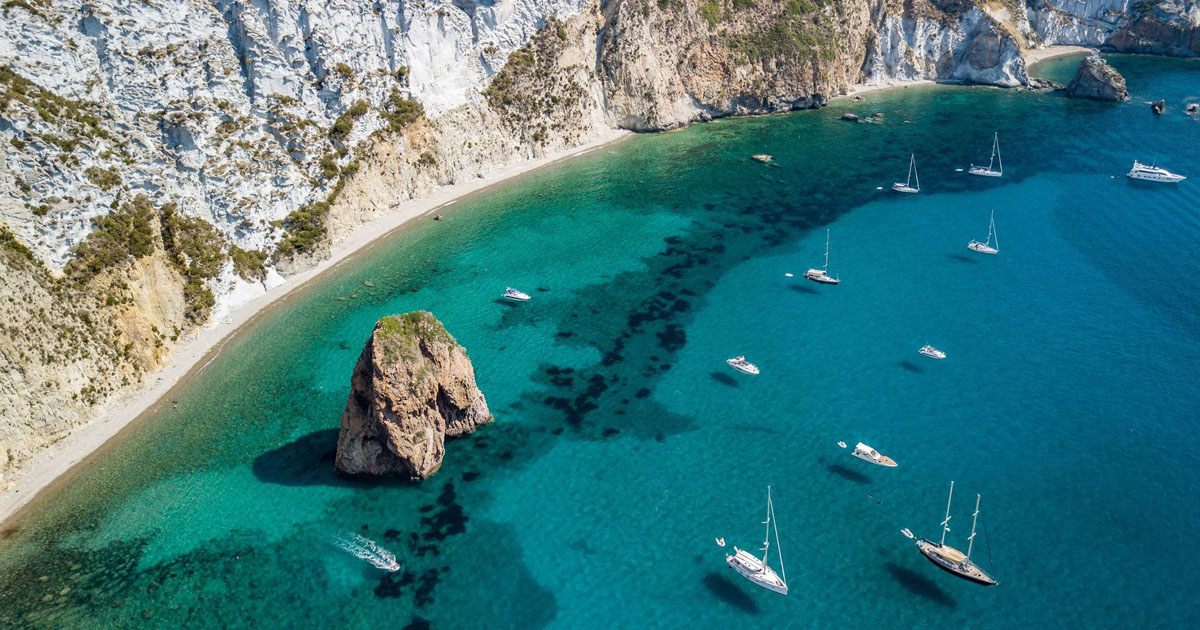
Dreamy beaches — between nature and nightlife
Ponza also boasts a few beautiful beaches. The island’s largest and most photographed is without doubt Chiaia di Luna, with its fine white pebbles, turquoise water, and crescent-moon shape. Unfortunately, it is currently closed to the public due to the risk of landslides from the surrounding cliffs, and landing on the beach is prohibited. It can, however, be admired safely from the sea — and if you look up, you can still spot the remains of a Roman necropolis at the top of the cliff.
Another favorite is Frontone Beach, loved by younger visitors and famous for its lively sunset aperitifs. Finally, there’s Cala Feola, one of the few sandy beaches on the island, which can also be reached on foot via a trail from the hamlet of Le Forna. You’ll be greeted by clear emerald waters surrounded by the lush greenery of Capo Bianco and Montagna della Corte. Right next to it are the Natural Pools, two masterpieces shaped over millennia by wind and sea erosion — volcanic rocks smoothed into two dazzling natural basins filled with bright blue, transparent water. One is nestled among the rocks, while the other opens directly onto the sea.
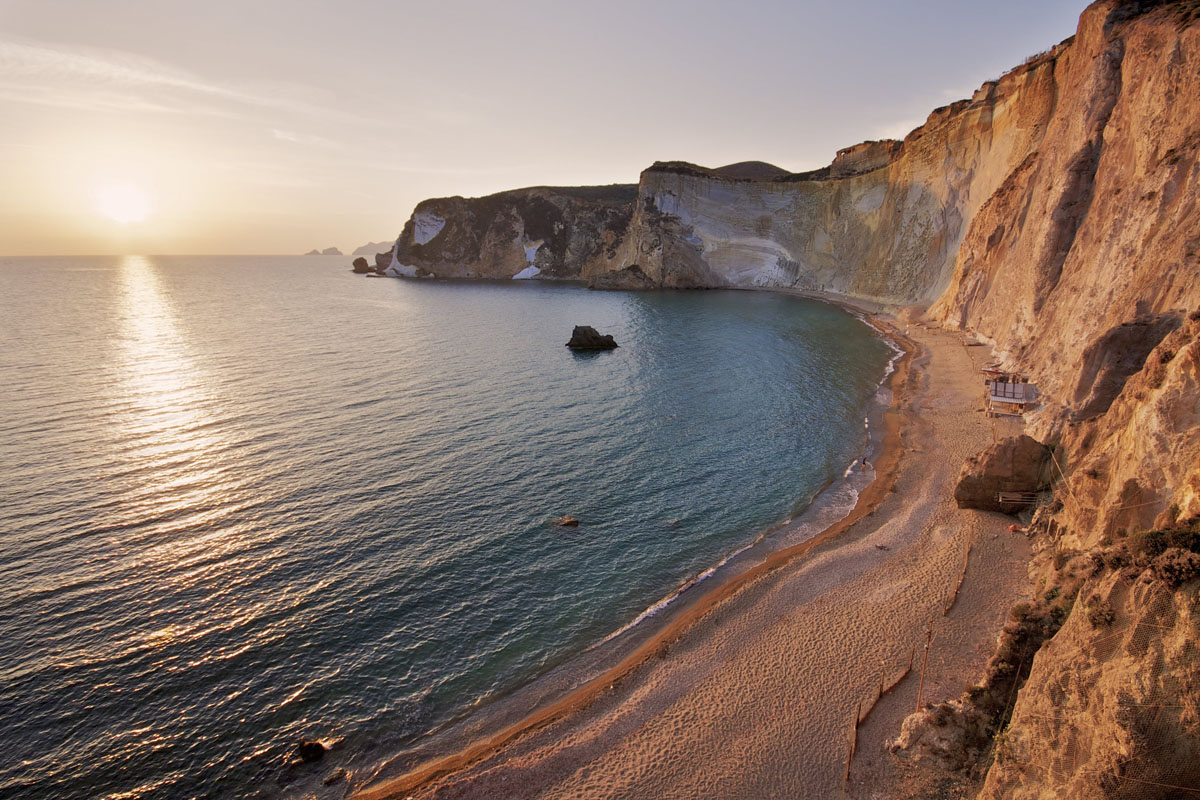
A coastline rich in natural wonders and traces of history
Sailing around Ponza reveals extraordinary natural and historical treasures, such as the Arco Naturale — one of the island’s most iconic landmarks. About 30 meters high and 7 meters wide, it rises majestically from the blue sea in all its splendor. This natural limestone arch, located in front of Schiavone Beach, can be crossed by medium-sized boats as well as canoes and kayaks for a delightful excursion. According to local tradition, anyone passing beneath it should make a wish — it’s said to come true. Locals call it “u’spacc purp” (or “spacca polpi” which in English translates to “octopus breaker”) because its shape resembles a broken octopus tentacle.
Equally fascinating are the Grotte di Pilato — a system of five man-made caves carved into the tuff rock and connected by underwater tunnels leading to an outer basin. Inside the niches once stood statues of pagan deities, and even today divers can admire carvings and decorations etched into the stone. Dating back to Roman times, the caves were once connected by a grand staircase to Emperor Octavian Augustus’s villa, whose remains are still visible. It was most likely the emperor’s private fish farm, used to breed prized species such as moray eels — considered sacred by the Romans.
Another remarkable site is Bagno Vecchio and its necropolis, a historic area of the island featuring a pebble and stone beach with seabeds perfect for snorkeling. During the Bourbon era, this was a “penal bath” — a forced labor camp where convicts were sent to catch quails using special nets known as “apparate.” Finally, Capo Bianco offers a bay framed by surreal white cliffs plunging dramatically into the deep blue sea — a breathtaking place that even enchanted Federico Fellini, who chose it as a filming location for his masterpiece “Satyricon.”
You May Also Like
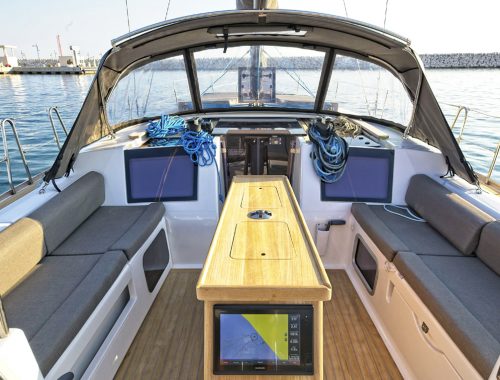
Organisation on the boat – a place for everything and everything in its place
23/11/2022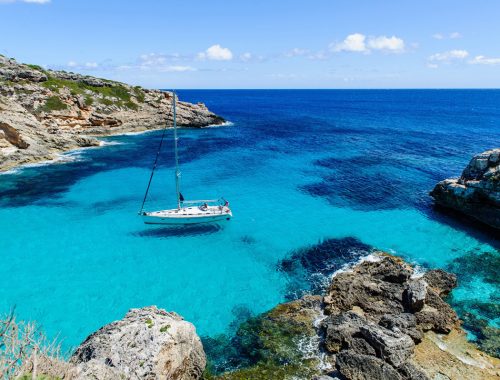
How to anchor safely and enjoy the bays
28/03/2024